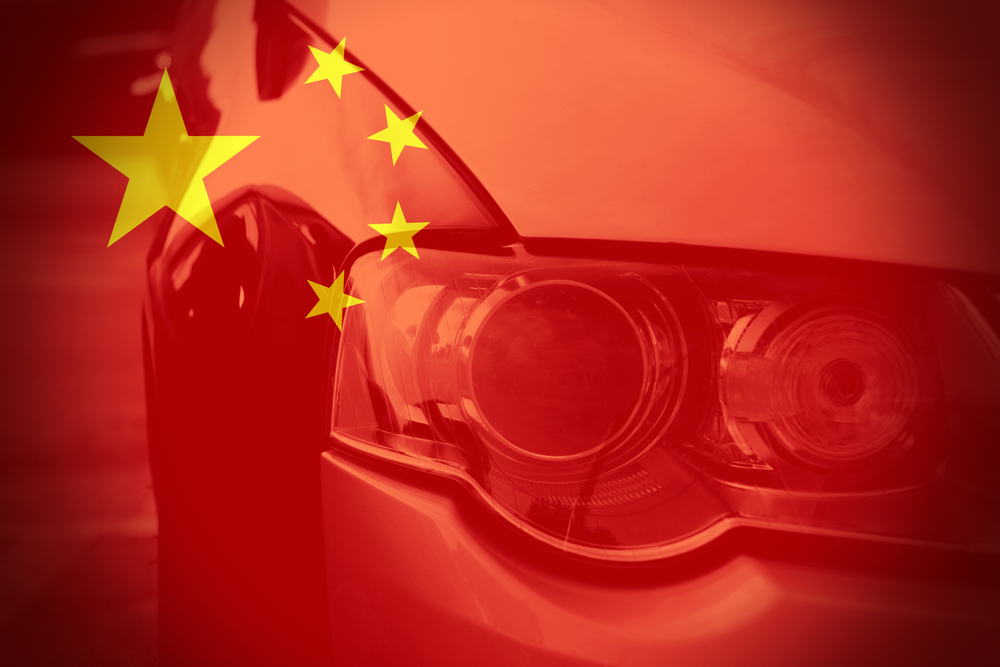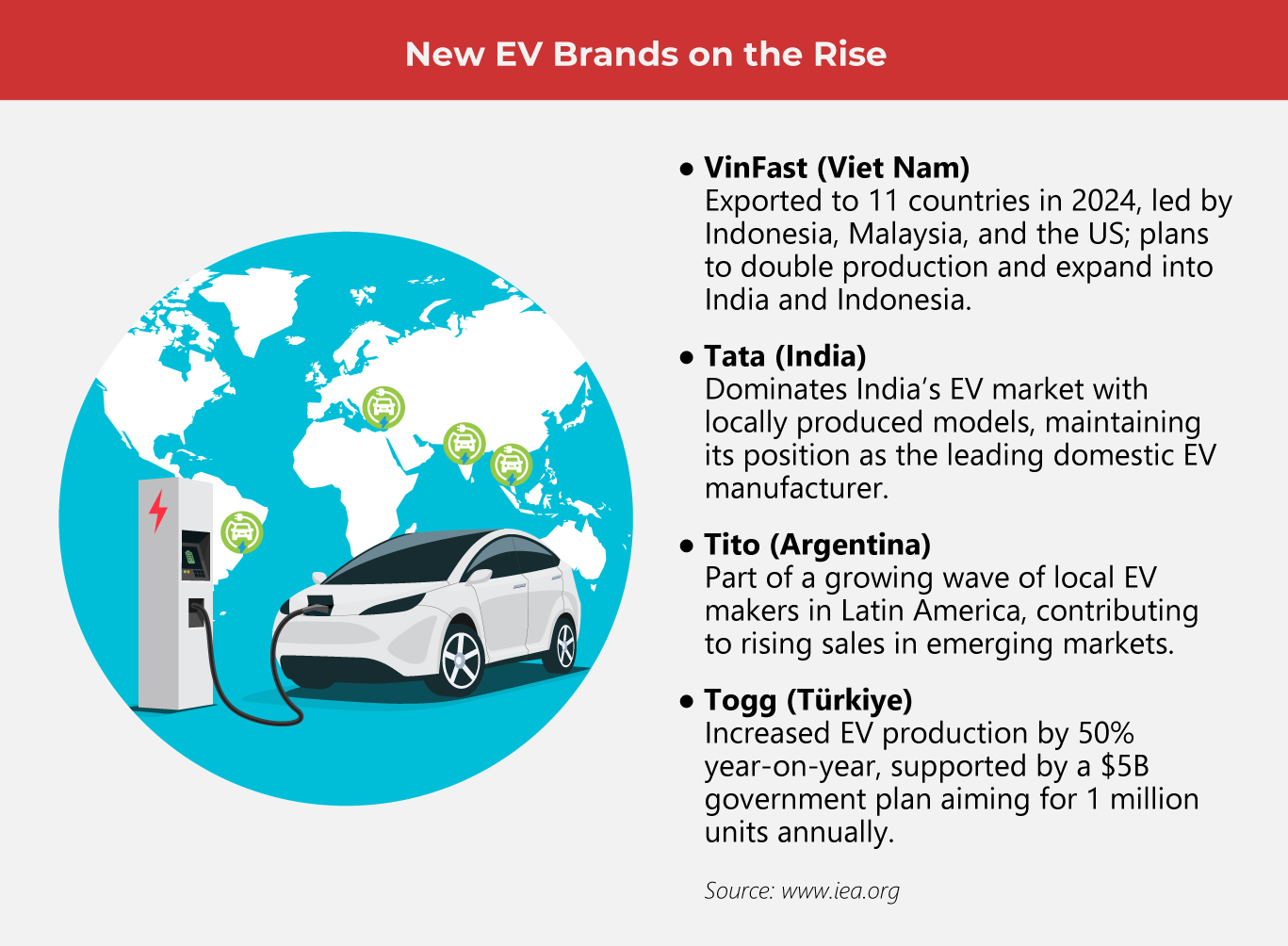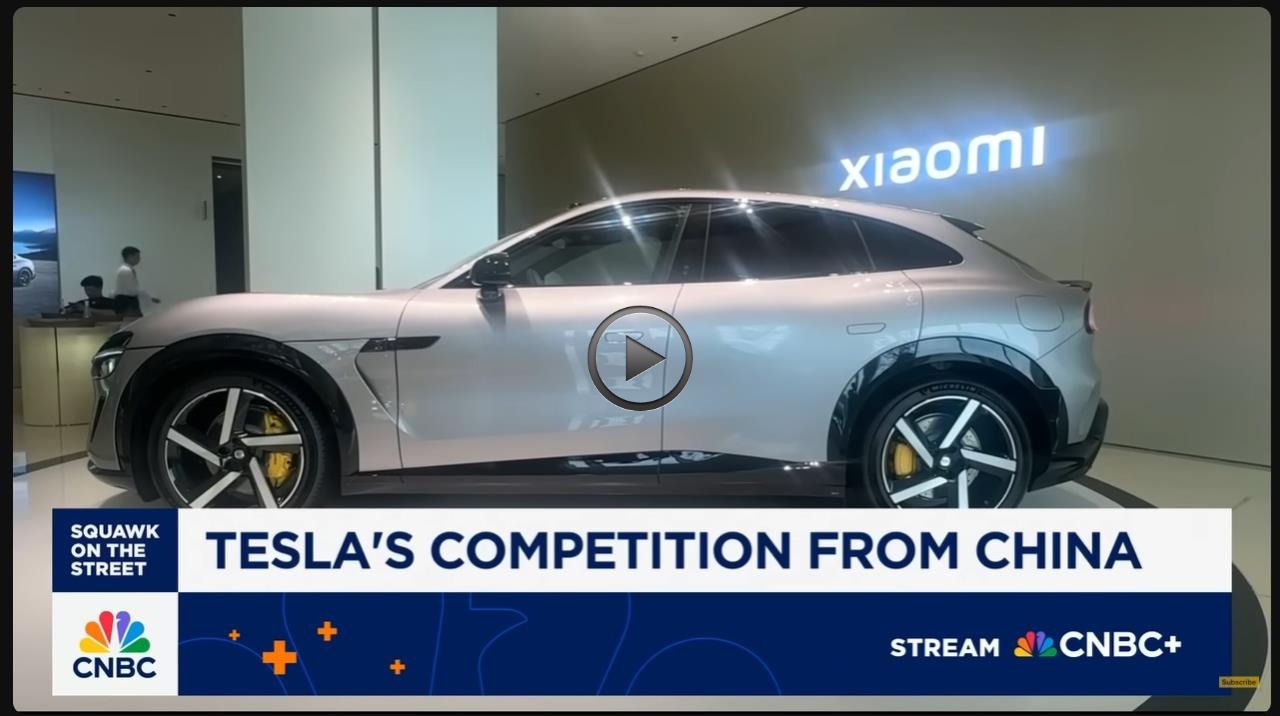A Deep Dive into China's EV Empire

In 2025, China’s BYD surged ahead of Tesla to take the top spot in the global EV space. With a massive home market of 1.4 billion fueling demand, BYD and a wave of emerging Chinese EV brands are now setting their sights on the international automotive market, offering budget-friendly electric cars for global consumers.
China has firmly positioned itself at the heart of the global EV market. In 2024, it produced more than 70% of all electric cars worldwide, showcasing both industrial might and strategic focus on clean mobility.
This growth has been largely fueled by the rapid expansion of domestic carmakers. Chinese manufacturers now account for over 80% of the country’s EV output, a sharp increase from around two-thirds in 2021. Their growing dominance is not only reshaping China’s automotive landscape but also intensifying global competition.
On the sales front, the momentum is just as striking. Nearly half of all cars sold in China in 2024 were electric, representing close to two-thirds of global EV sales. With year-on-year growth of almost 40%, China's electric car market continues to set the pace for the rest of the world.
China’s EV journey
Back in the early 2000s, China’s automotive ambitions were constrained by a reliance on foreign brands and fossil-fuel technology. Despite its manufacturing excellence, the country lacked a globally competitive homegrown carmaker.
Instead of continuing down a well-worn path dominated by internal combustion engines, the Chinese government took a calculated leap into the unknown. It made a strategic pivot toward EVs, funneling investment into battery innovation and signaling a national shift toward clean mobility.
At the time, EVs were little more than fringe projects—low-volume curiosities from major auto companies, often scrapped before reaching the new product introduction stage. Still, Chinese policymakers saw the chance to lead in a future-facing sector that could one day reshape the global auto industry.
For China, EVs also promised sustainability, less reliance on imported oil, and a boost to the post-2008 economy. It also had key structural advantages. With solid supply chain management, technically capable workers, and creative manufacturing solutions, the country could easily pivot from gas-powered cars to electric ones.
Beginning in 2001, China made EV technology a national priority by including it in its Five-Year Plan. This move signaled a long-term commitment to developing electric mobility through focused product design and development.
Momentum picked up in 2007 with the appointment of Wan Gang, a former Audi engineer and EV advocate, as China’s science and technology minister. After test-driving Tesla’s Roadster in 2008, he championed a national shift toward EVs. Since then, EVs have remained central to China’s future-ready economic planning.
(Also read: The Rise of Sustainable Automaking)
Massive government support
In the 2010s, China rolled out generous subsidies to spur EV production, boost sales, and scale up the industry.
The Center for Strategic and International Studies estimates that between 2009 and 2023, China invested approximately $231 billion to develop its EV sector. The support extended across the board—from buyers and automakers to battery producers and power companies.
The result of that move was the rise of major EV players like BYD–and CATL, which produces a third of the world’s EV batteries. Long-term planning, government funding, and focused system development also gave China control over key battery supply chains and enabled it to build the world’s largest public charging network.
Other government measures included early support for domestic EV firms through procurement contracts, helping them survive the industry's uncertain early days. In the early 2010s, China's EVs first appeared not in personal garages, but as part of the country’s expansive public transportation system.
To further drive adoption, the government offered subsidies for trading in gas cars, waived purchase taxes, and lowered charging fees, delivering economic value to consumers. While most drivers pay steep fees for license plates, EV owners receive them for free.
China’s battery swapping stations have significantly boosted EV use, offering drivers a rapid and convenient alternative to traditional charging. Companies like Nio and CATL pioneered the technology, with Nio operating over 2,000 swap stations across China and enabling battery exchanges in under five minutes.
The battery advantage
The EV battery can make or break a car’s success. It is the most critical component, often making up as much as 40% of the vehicle’s cost. A battery that delivers strong performance, long lifespan, and a reasonable price is key to making electric cars commercially viable.
Chinese companies have played a key role in advancing battery technology by championing lithium iron phosphate (LFP) batteries. While Western firms favored nickel-based alternatives, China focused on refining the more affordable LFP cells. Though early versions lagged in energy density and cold-weather performance, years of material testing and product validation paid off. Chinese manufacturers closed the performance gap, making LFP a competitive option for modern EVs.
Another crucial edge in battery production is China’s dominance in refining key materials like graphite, lithium hydroxide, cobalt, and nickel sulfate. Even without the largest raw reserves, the country controls most of the global processing capacity, giving it outsized influence over the battery supply chain.

(Also read: Driving Precision Forward: IMI’s Award-Winning Stray Light Tester for Automotive Cameras)
Charging ahead
With the growth of the renewable energy market, EVs are becoming a central pillar in global climate strategy, and China is at the heart of this transformation. But not everyone is on board with how it’s happening. The subsidies that have powered China’s EV boom are drawing backlash from Western governments keen to protect their domestic car industries. According to the BBC, the US, Canada, and the EU have all responded with hefty tariffs on Chinese EV imports.
Still, the UK is taking a different approach. Rather than impose trade barriers, it has opened its doors to Chinese brands. XPeng began UK deliveries of its G6 model, while BYD launched its Dolphin Surf this month.
Despite the hesitation of some nations, it is undeniable that Chinese EVs are driving the transformation toward cleaner transport at an unmatched speed and scale. As calls for net-zero emissions grow louder, China’s ability to produce affordable, high-quality EVs positions it at the forefront of the global shift to sustainable mobility.
As one of the Top 20 EMS companies in the world, IMI has over 40 years of experience in providing electronics manufacturing and technology solutions.
We are ready to support your business on a global scale.
Our proven technical expertise, worldwide reach, and vast experience in high-growth and emerging markets make us the ideal global manufacturing solutions partner.
Let's work together to build our future today.
Other Blog




